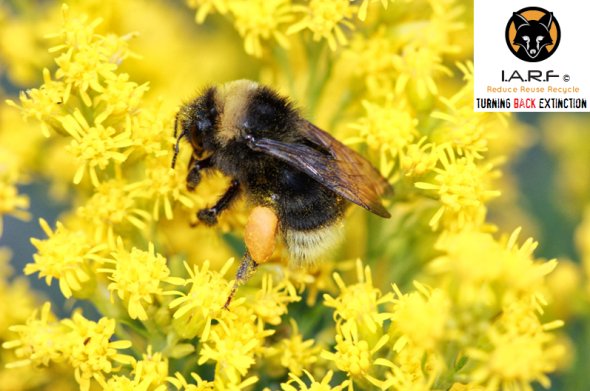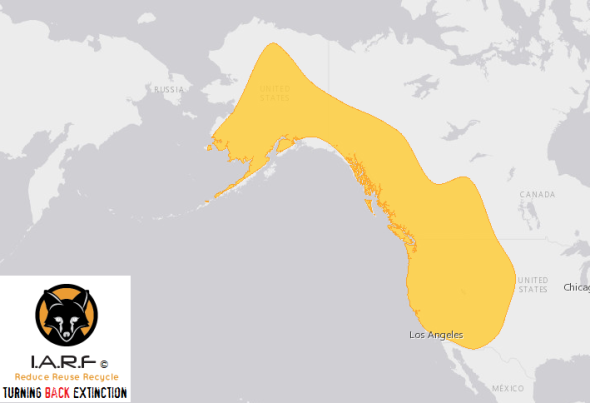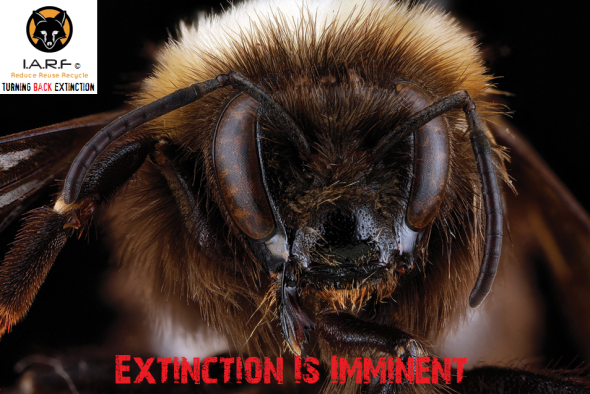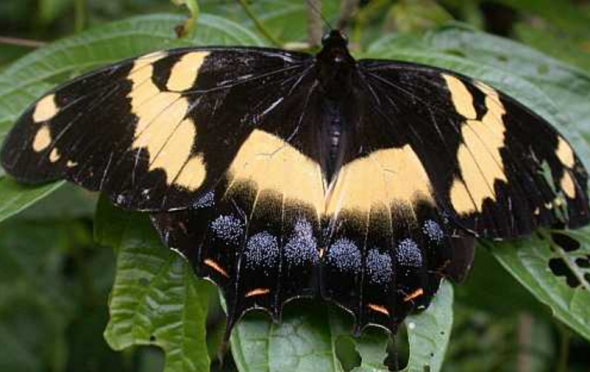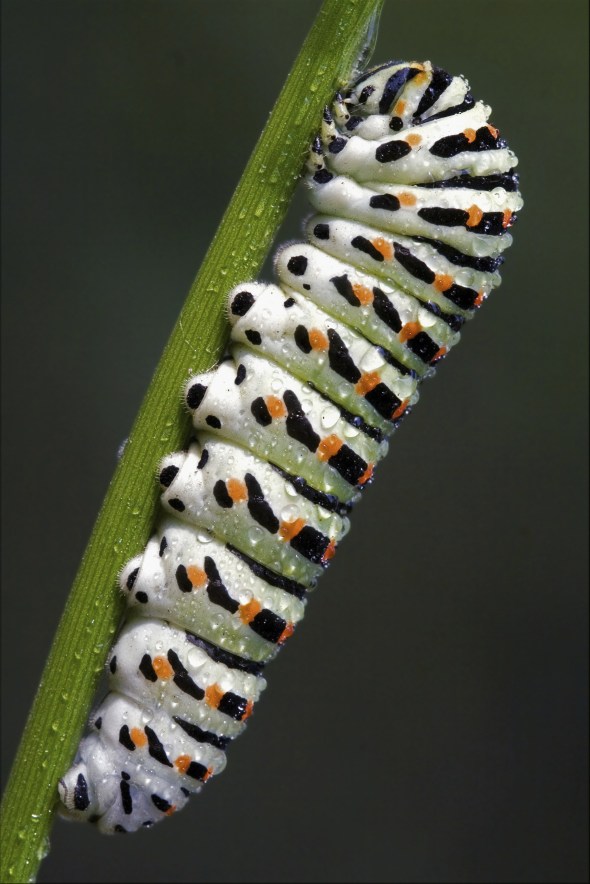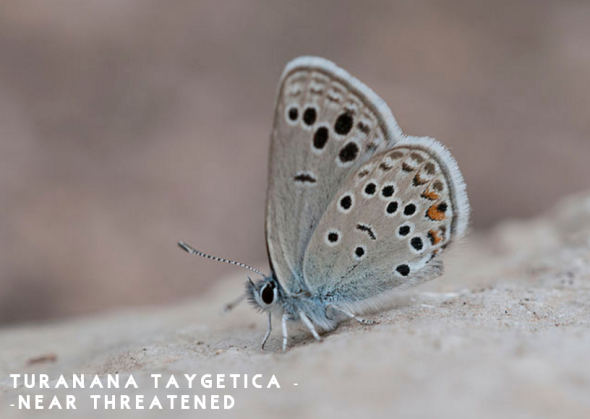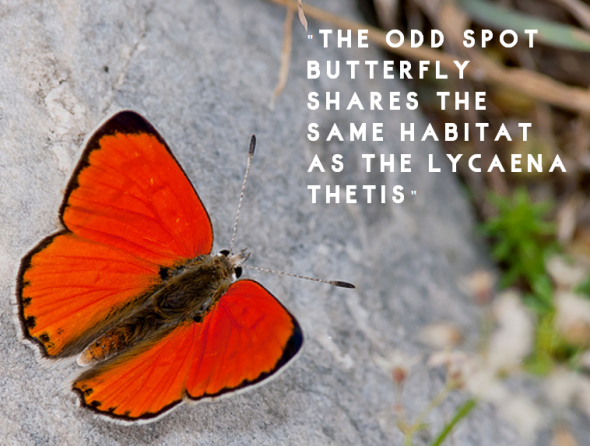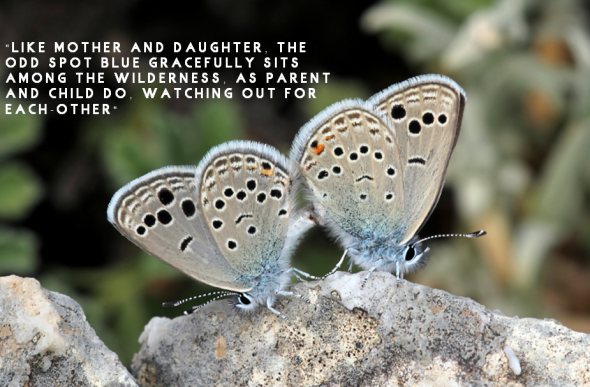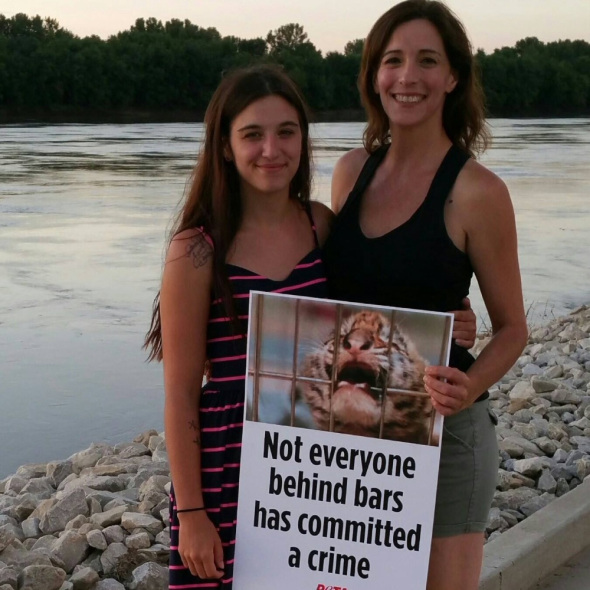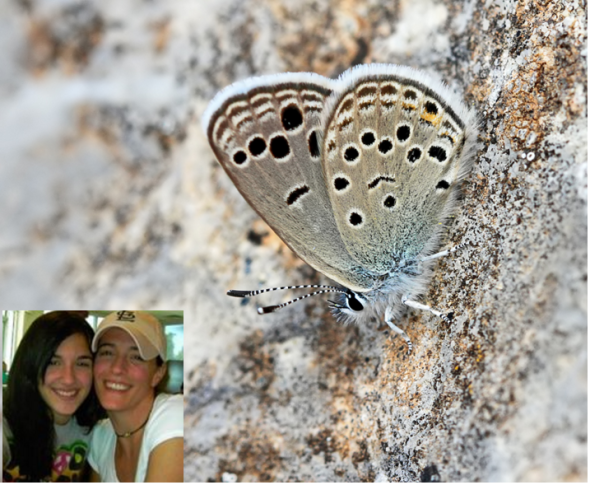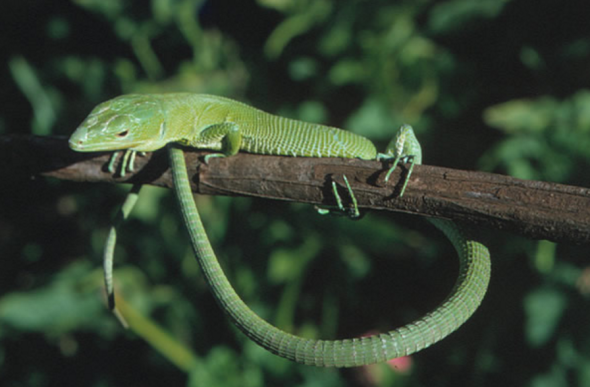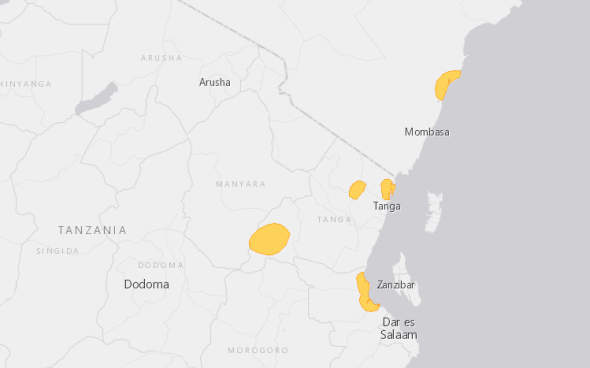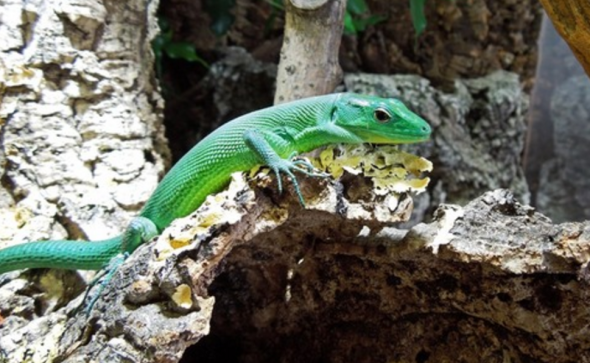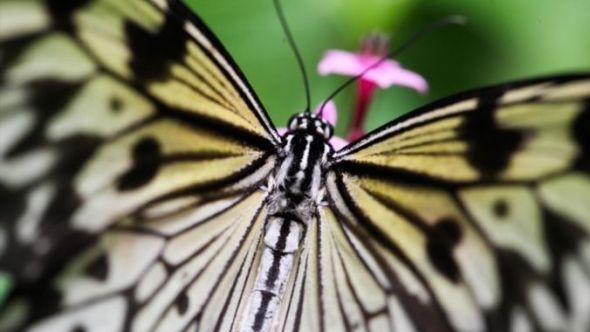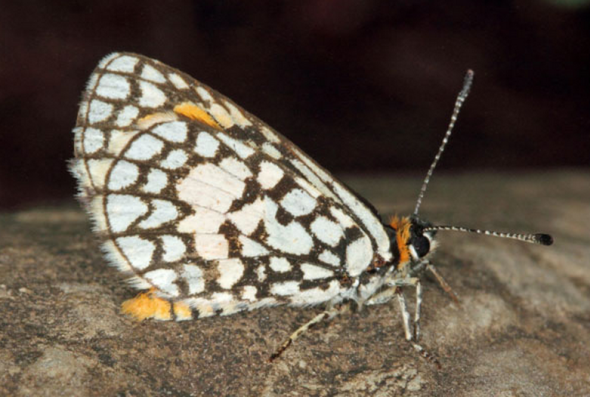Endangered Species Monday: Bombus occidentalis |Extinction is Imminent.
Endangered Species Monday: Bombus occidentalis
“1/3 bites of food we eat comes from a plant that was pollinated by a bee”
What are we humans doing to Planet Earth?, We are destroying so many pollinating animals, that soon they’ll be none left. When or if that day occurs, when there are no more pollinators, we ourselves will be fighting to stay alive, can you imagine that? Human extinction is slowly in the making… …No matter how many vegans or vegetarians there are, we all require plants. No plants = No life!
That’s a Scientific Fact of Life!
Dr Jose Depre
This Monday’s Endangered Species Post (E.S.P) I document on the Western Bumble Bee. Scientifically identified as Bombus occidentalis this particular species of bee is listed as (vulnerable), and is now nearing complete extinction within the wild, despite conservation efforts aimed at reducing dangers, things certainly are not looking good for the bee, or crops the species pollinates either. Image credits: Rich Hatfield
The species was identified back in 1858 by Dr Edward Lee Greene, Ph.D, (August 10, 1843 – November 10, 1915) was an American botanist known for his numerous publications including the two-part Landmarks of Botanical History and the naming or redescribing of over 4,400 species of plants in the American West.
Endemic to: Canada (Alberta, British Columbia, Northwest Territories, Saskatchewan, Yukon); United States (Alaska, Arizona, California, Colorado, Idaho, Montana, Nebraska, Nevada, New Mexico, Oregon, South Dakota, Utah, Washington, and Wyoming). To date we still don’t know what the “exact current rate of decline is”, or even if the Western Bumble Bee is going to be with us within the next decade. Its ‘likely that based on current surveys the species will be extinct within the next 10 years (max)”.
Since 2008-2014 there has been quite a significant rate of decline st 11%-12%, sparking concerns that the Western Bumble Bee ‘may eventually be listed as critically endangered’ within the United States and Canada. Scientists confirmed that in one area which is [unknown], possibly the United States via field surveys the species was not found during the years of 2003-2007 (which is of course quite concerning), especially when the species is a major pollinator, and has been seen only in very low numbers at (one to seven per year) each year from 2008 to 2014.
A study conducted focusing on ‘range decline’ relating to some eight separate species native to the United States, showed that the Western Bumble Bee species alone had decreased in population size within its (range), by some 28% (EST) between the years of 2007-2008. A further study conducted by conservation scientists concluded that by 2007-2009 surveys detected the species only throughout the Intermountain West and Rocky Mountains; it was largely absent from the western portion of its range.
Further declines have been reported within the [US] states’ of Oregon and Washington, however populations seem to be somewhat stable within (northeastern Oregon). Populations are also to a degree stable within Alaska and the Yukon. Average decline for this species was calculated by averaging the change in abundance, persistence, and EOO.
- Current range size is estimated to be at some 77.96%
- Persistence in current range relative to historic occupancy: 72.56%
- Current relative abundance relative to historic values: 28.51%
- Average decline: 40.32%
From viewing all data records I can confirm that the (exact rate of decline) within the species range, and its persistence total some 20%, with a 70% rate of decline in ‘abundance’. Surveys have also proven the this decades rate of decline is bar far lower than the last decades, which again raises some rather large concerns about a near future extinction occurring.
Image: Western Bumble Bees’ extant zones.
In the past, B. occidentalis was commercially reared for pollination of greenhouse tomatoes and other crops in North America. Commercial rearing of this species began in 1992, with two origins. Some colonies were produced in rearing facilities in California by a company which imported the technology for rearing bumble bees and applied it to rearing B. occidentalis locally in California.
This same year, a distributor for a competitor which did not have rearing facilities in North America at the time was granted permits by the US Department of Agriculture – Animal and Plant Health Inspection Service (USDA-APHIS) for a three year window of time (1992-1994) to export queens of B. occidentalis and B. impatiens to European rearing facilities for colony production.
Following rearing, these colonies were then shipped back to the U.S. for commercial pollination. In 1997, commercial producers began experiencing problems with disease (Nosema) in the production of B. occidentalis. Eventually, the availability of B. occidentalis became critically low, and western crop producers who had become dependent on pollination provided by this species began requesting that APHIS allow the shipment and use of B. impatiens in western states.
In 1998, the USDA-APHIS issued permits to allow B. impatiens to be used in the western U.S. However, within a few years, the USDA-APHIS stopped regulating the interstate movement of bumble bees altogether, citing their lack of regulatory authority. Bombus occidentalis is no longer bred and sold commercially and B. impatiens is used widely in the western U.S. One has to wonder though that since the the US Government stopped granting permits for Bombus occidentalis mostly due to species decline, primarily due to human ignorance, will the same rate of decline now be seen with the species B. impatiens?
Currently to date the only ‘known conservation actions that are under way is that of management, research and surveys’, meanwhile its likely that come the next decade we’ll have lost the species due to a lack of improving/increasing populations, and habitat while failing to decrease disease and virus.
THREATS
Populations of this declining species have been associated with higher levels of the microsporidian Nosema bombi and reduced genetic diversity relative to populations of co-occurring stable species. The major decline of the subgenus Bombus was first documented in B. occidentalis, as Nosema nearly wiped out commercial hives, leading to the cessation of commercial production of this species. Wild populations crashed simultaneously and the closely related B. franklini has been pushed to the brink of extinction.
However, Koch and Strange (2012) found high levels of infestation by Nosema in interior Alaska where this bumble bee was still quite common. In addition to disease, this species is faced with numerous other stressors including habitat loss and alteration due to agricultural intensification, urban development, conifer encroachment (resulting from fire suppression), grazing, logging and climate change.
Modifications to bumble bee habitat from over grazing by livestock can be particularly harmful to bumble bees by removing floral resources, especially during the mid-summer period when flowers may already be scarce. In addition, livestock may trample nesting and overwintering sites, or disrupt rodent populations, which can indirectly harm bumble bees. Indirect effects of logging (such as increased siltation in runoff) and recreation (such as off-road vehicle use) also have the potential to alter meadow ecosystems and disrupt B. occidentalis habitat.
Additional habitat alterations, such as conifer encroachment resulting from fire suppression, fire, agricultural intensification, urban development, and climate change may also threaten B. occidentalis. Insecticides, which are designed to kill insects directly, and herbicides, which can remove floral resources, both pose serious threats to bumble bees. Of particular concern are neonicotinoids, a class of systemic insecticides whose toxins are extraordinarily persistent, are expressed in the nectar and pollen of plants (and therefore are actively collected by bumble bees), and exert both lethal and sublethal effects on bumble bees.
Since B. occidentalis has recently undergone a dramatic decline in range and relative abundance, reduced genetic diversity and other genetic factors make this species especially vulnerable to extinction, and may lead to increased pathogen susceptibility. Recent research indicates that populations of B. occidentalis have lower genetic diversity compared to populations of co-occurring stable species.
It is therefore regrettable, that despite research, management and surveys - extinction is imminent, when though, we simply don’t know, however when it does happen, it means that yet another pollinator that we humans and animals depend on will be gone for good.
Image: Female B. occidentalis
Humans will never learn or understand just how critically important our wildlife is, until its gone. They’ll then be fighting over themselves, fighting to stay alive. By that time, human extinction will already be in the process.
Dr Jose C. Depre
Chief Environmental & Botanical Officer.
Follow me on Twitter here: https://twitter.com/josedepre11
Endangered Species Monday: Papilio homerus |Extinction Imminent.
Endangered Species Monday: Papilio homerus
This Mondays (Endangered Species Post) E.S.P, I document again on this stunning species of swallowtail butterfly. I last documented on this amazing species of butterfly two years back, unfortunately conservation actions that were ongoing back then still don’t seem to really be improving the current status of the largest swallow tail butterfly in the Western Hemisphere. Image credited to Dr Matthew S. Lehnert.
Despite the species nearing (complete extinction) within the wild, with a possible extinction likely to occur soon, biologists and conservationists are doing all they can to improve the current status of this beautiful insect, we can only hope for the best, or that the Jamaican Government increases further protection for the species, thus earmarking funding for conservation teams on the ground to preserve our largest Western Hemisphere species of swallowtail.
Endemic to Jamaica, the species was first discovered by Professor Johan Christian Fabricius (7 January 1745 – 3 March 1808) who was a Danish zoologist, specializing in “Insecta”, which at that time included all arthropods: insects, arachnids, crustaceans and others. He was a student of Professor Carl von Linnaeus, and is considered one of the most important entomologists of the 18th century, having named nearly 10,000 species of animals, and established the basis for the modern insect classification.
Professor Johan Christian Fabricius first identified and documented on P. homerus back in 1793. The common name for this swallowtail butterfly is known as the Homerus Swallowtail, which is listed as [endangered]. Back in 1983 the species was first listed as [vulnerable]. Then from 1985-1994 the species was re-listed as [endangered]. Evidence shows from 2007 we almost lost the species, of which conservation press and media pleaded with the public for help, which did in a way increase awareness. Sadly we need more awareness on and about this butterfly.
The specie hosts a wingspan of some fifteen centimeters, the Jamaican swallowtail is said to be the second largest swallowtail of its kind on the planet, with the African swallowtail alleged to be the largest. The species can only be located within the forests of Jamaica, of which habitat loss remains the largest yet significant threat associated with this species of swallowtail butterfly, butterfly collecting is alleged to be the second largest threat. Parasitic wasps also pose a large threat to the P. homerus too.
Back in the 1930’s P. homerus was considered to be somewhat common throughout Jamaica, however, regrettably the species can now only be located within the Blue and John Crow Mountains in eastern Jamaica. Population count is [estimated to be no fewer than fifty individuals], which theoretically makes this super stunning butterfly one of the planets most threatened species of insects.
P. homerus is included on the Convention of International Trade in Endangered Species wild flora and fauna (Cites), of which (all domestic and international trade of this species is strictly illegal). Collection for display and trade is illegal, and finally destruction of the swallowtail butterflies habitat is furthermore strictly ‘forbidden’.
It has been suggested that the species could/may ‘benefit from captive breeding’, more data on this subject can be located hereto http://www.troplep.org/TLR/1-2/pdf005.pdf The caterpillars feed exclusively on Hernandia jamaicensis and H. catalpifolia; both of which also are endemic to Jamaica.
The Giant is a peaceful lover of a quiet habitat and is normally found in areas that remain undisturbed and unsettled for the most part, although due to destruction of its habitat can rarely be found at some cultivated edges of the forests on the island. P. homerus primary and favorite residence is usually the wet limestone and lower montane rain forests, however, it is now isolated to only 2 known locations on the island of Jamaica. The reproduction habits are not well known but like most of its fluttering cousins, it feeds on leaves and flowers where it also breeds and lays eggs that develop on the host plants.
P. homerus future remains critical, and its quite likely that we’re going to see yet another extinction occur sometime very soon. As much as I hate to say this, I do honesty believe that a complete wild extinction may occur in no fewer than 1-2 years (if that). However I believe based on the current populations, data, and habitat destruction, that extinction will occur sooner than that. I am not aware (as explained) of any captive breeding programmes, which if such projects are not undertaken now, we’ll see the species gone for good in under a year.
Image: P. homerus caterpillar.
Thank you for reading, and please share this article to create more awareness relating to the Jamaican swallowtail, and lets hold our breath and pray to almighty God that somewhere out there, wherever God may be, a miracle may occur.
Dr Jose C. Depre
Follow me on Twitter here: https://twitter.com/josedepre11
Follow our main Facebook page here: https://www.facebook.com/InternationalAnimalRescueFoundationAfrica/
International Animal Rescue Foundation and Environmental News & Media are looking for keen, enthusiastic, environmental and animal lovers to write alongside us. We do not pick sides, and show both sides to every-story. We like to take a more middle stance, rather than a one-sided stance. If you would like to spare an hour of your time, per week, voluntarily writing for us, or your own environmental/animal welfare related issue please contact us via the contact box below.
Please note that we have since moved our main communications website to a new and more professional server that will be hosting everything from real life news, real time projects, world stories, environmental and animal rescues and much more. International Animal Rescue Foundation is a 100% self funded environmental company. While we don’t rely on donations, you can make a donation to us via our main Anti Pet & Bush Meat Coalition organisation page.
Have a nice day.
Endangered Species Monday: Turanana taygetica | Dedicated to Mme Taylor Nicole.
Endangered Species Monday: Turanana taygetica
This Mondays (ESP) Endangered Species watch Post I touch up on the T. taygetica identified by Dr Rebel back in 1902. Image credited: Zeynel Cebeci I am also dedicating this article to the early Mme Taylor Nicole who sadly passed away last week to Mother Christina Ann. Mme Ann is an unselfish animal rights activist dedicating her time, love and care to African, American and international wildlife. Mme Ann regularly undertakes animal rights projects for the Start for Animals Project, Missouri, United States.
The ‘odd spot blue butterfly’ as the species is commonly known was primarily identified by Dr Hans Rebel whom was an Austrian entomologist who specialized in Lepidoptera. Rebel, who had an early interest in natural history and butterflies, first became a lawyer. He devoted his spare time to studying Lepidoptera and established the entomological section of the Botanical and Zoological Society of Vienna.
He succeeded Alois Friedrich Rogenhofer (1831–1897) as keeper of the Lepidoptera collection of the Naturhistorisches Museum in Vienna, a post he held from 1897 to 1932. Dr Rebel enriched the collections and as a grand voyageur, made many collecting trips in Austro-Hungary and five trips in the Balkans. He directed the Department of Zoology in 1923 and was the museum’s director general in 1925.
T. taygetica is listed as [near threatened], although new data from Cites has suggested that the species may soon be re-listed as [vulnerable]. To date there is very little knowledge known about this specific species of butterfly, and the split related species identified as T. endymion.
Endemic to Greece and Turkey (Europe), populations of this stunningly beautiful insect are known to be decreasing quite rapidly. The odd-spot blue butterfly occurs in dry, calcareous places covered with low-growing shrubs, and are commonly witnessed drinking the nectar from the herb plant identified as Thyme, scientifically known as Thymus vulgaris. Males are known to leave their normal habitat for more ‘damper patches of ground’, while females commonly lay their eggs within the species of flora identified as Acantholimon karamanicum.
Image: Odd spot blue Butterfly shares its habitat with the L. thetis.
The odd spot blue butterfly shares its habitat with this utterly stunning copper-tinged Lycaena thetis (pictured above), both of which contrast one-another beautifully. Both butterflies caterpillars also share the same species of food-plant which is quite a rare behavior within the world of butterflies.
The Turanana taygetica (scientific identification) is not known to be listed on anyone of the Cites Appendices either, despite the fact the species is near threatened/vulnerable, with populations declining quite rapidly within Greece and Turkey. Furthermore populations have plummeted to a staggering 30-50% over the past two decades. To date there is no-known true or mean population count. International Animal Rescue Foundation England are though looking into this, and hope to release a more accurate report addressed too the Convention on International Trade of Endangered Species wild flora and fauna (Cites).
Major Threats
This species has a restricted distribution. It is threatened by changes in the agricultural practices (mainly abandonment), quarrying and tourist activities. In Greece it is a popular butterfly for collectors. One population in Greece was recently destroyed by the building of a road. Regarding its limited distribution it might get threatened on the longer run by climate change. As the species is not treated in the Climatic Risk Atlas, there is no information on the possible change of the climate envelope.
Image: Odd spot blue butterflies watching each others backs
The length of the forewings is 10–12 mm. The ground colour of the upperside of the wings is blue with blackish marginal borders. The underside ground colour is whitish grey. Adult males are often found watering inside the forest zone and near the presumed host-plant.
This Mondays (ESP) Endangered Species Watch post is dedicated to the early Mme Taylor Nicole whom sadly passed away last week. Herein are a few links to share, tag, and to learn to cope with sudden bereavement within the family environment.
I myself never met Mme Nicole or her mother Christina, however have spoken to Christina occasionally in relation to the work that I have undertaken in the past regarding the pet meat trade. I believe I owe a little gratitude to such a wonderful person.
Image: Mme Christina Ann and Daughter Mme Taylor Nicole
Due to Mme Christina Ann’s daughter passing away suddenly, while Christina was on excursion on the continent of Africa, helping those within impoverished zones, and those with no voice, Mme Ann’s travel insurance would not cover the expenses of having to suddenly flying back home. Please be most kind to donate a small amount to help mother cover this charge by clicking the link hereto: https://www.gofundme.com/9nnawu5w
The link hereto https://www.compassionatefriends.org/Brochures/surviving_your_childs_suicide.aspx provides more details for parents on how to deal with sudden death. Compassionate Friends is a United States Not for Profit Organisation helping parents, relatives and friends dealing with the loss of a close loved one from suicide.
“The love between a mother and daughter is FOREVER”
Today’s Endangered Species Post (ESP) is dedicated to the Odd spot blue butterfly, Mother Christina Ann and Daughter Mme Taylor Nicole.
Thank you for reading.
Dr Jose Carlos Depre PhD. MEnvSc. BSc(Hons) Botany, PhD(NeuroSci) D.V.M.
Environmental, Botanical & Human Science
Chief Environmental Officer (CEO)
Endangered Species Monday: Alaena margaritacea
Endangered Species Monday: Alaena margaritacea
This Mondays (ESP) Endangered Species Watch Post we take a brief glance at South Africa’s most endangered species of butterfly. Generically identified as Alaena margaritacea the species was primarily located by Dr Harry Eltringham FRS (18 May 1873, South Shields - 26 November 1941, from Stroud) whom was an English histologist and entomologist who specialized in Lepidoptera. (Image: unknown photographer)
Dr Eltringham had been awarded a Master of Science (Cantab and Oxon) and a Doctor of Science (Oxon). He worked at the Hope Department of Entomology. He wrote Histological and Illustrative Methods for Entomologists OCLC 03655743, The Senses of Insects, London, Methuen (1933) and on Lepidoptera Nymphalidae: Subfamily Acraeinae. Lepidopterorum Catalogus 11:1-65 with Karl Jordan (1913) and On specific and mimetic relationships in the genus Heliconius.
Commonly known as the Wolkberg Zulu butterfly and identified back in 1929 the species stands within ‘threatened’ status of which has qualified for vulnerable listing. Endemic to a wee small town of South Africa the butterfly is from the family Lycaenidae which is the (second largest family of butterflies on the planet), hosting some 5,000 species and, constitutes 30% of the butterfly species on Planet Earth.
A. margaritacea is known to inhabit grassy slopes adjoining afromontane forest in the Haenertsburg area of the Limpopo Province near the Wolkberg. Populations trends are currently not known however we do know that flora alien (non-native botanical specimens) are placing the only two known colonies of Wolkberg Zulu butterflies within that area in [extreme danger], back in 2013-2014 a second colony was located to the joy of many.
To give you a clearer image of just how threatened the species is (any such habitat disturbance within their known range could see extinction occur within days rather than months or years).
However its not all doom and gloom yet. There is hope, even within a country that’s habitat is slowly being destroyed by agriculture, aquaculture and urbanization. Three years ago the species was believed to have gone extinct. However an intensive search was mounted by members of the Lepidopterists’ Society of Africa.
Despite being identified back in 1929 the species has only ever been known to occur in one single location: a small town in northern South Africa in Polokwane within the town of Haenertsberg. The wingspan is 24–27 mm for males and 28–30 mm for females. Adults are on wing from late December to early January. There is one generation per year. Lepidopterists’ Society of Africa spokesperson Naturalist Andre Coetzer stated that as yet none has been able to locate a third colony (2014).
The species has a habit of settling very frequently and for very long periods … which makes searching for the butterfly a tedious, challenging task involving long treks over rocky terrain while combing and scrutinizing the grass and undergrowth. And there’s another problem: the Wolkberg Zulu has an extremely short flight period (the ‘winged’ adult part of its life cycle) – just three weeks in December and early January that also happens to fall right in the middle of the rainy season. All of this easily explains why no one has found another colony of this elusive and endangered butterfly in the last 80 years. Until now… Please read more here to learn more on the butterfly. For fuether information please contact the organisation directly - click here
A typical liquid diet consists of nectar from flowers but also eat tree sap, dung, pollen, or rotting fruit. They are attracted to sodium found in salt and sweat too.
The word Lepidoptera is derived from the Latin words “lepido” meaning scale, and “ptera” meaning wings. Lepidoptera literally means scale wings, referring to the minute scale-like structures on the wings of both butterflies and moths. We are unsure as to how many Wolkberg Zulu Butterflies actually live within the two colonies, there could be anything from 100-200 (random guess). Which is why we please ask all our readers to make a donation to the Lepidopterists Society of Africa to secure more projects.
Image: Wolkberg Zulu butterfly
For now we remain skeptical and whether there will be more colonies located. We are praying for more colonies to be located. The Department of Environmental Affairs must do more to protect their lands from invasive botanical species to ensure future survival of all flora and fauna. Not forgetting establishing a funding program, protected and manned area to secure their South Africa’s critically endangered butterfly. Failing this we’ll lose South Africa’s most rarest butterfly known to humankind.
Threats
The only known threat to be placing the species in direct danger are that of alien botanical species. Habitat destruction is not known to be problematic within the region although agriculture and human disturbance could very well become a problem. For more information on alien invasive species please see click here for further information.
Unfortunately folks we do not have a video to show of this amazing video but hope one is made available soon. Video footage of this amazing yet so very rare butterfly would be wonderful to view. Please don’t forget to check out the links above and, donate if you can to the group Lepidopterists’ Society of Africa.
Thank you for reading.
Dr Jose C. Depre.
Chief Environmental and Botanical Scientist.

